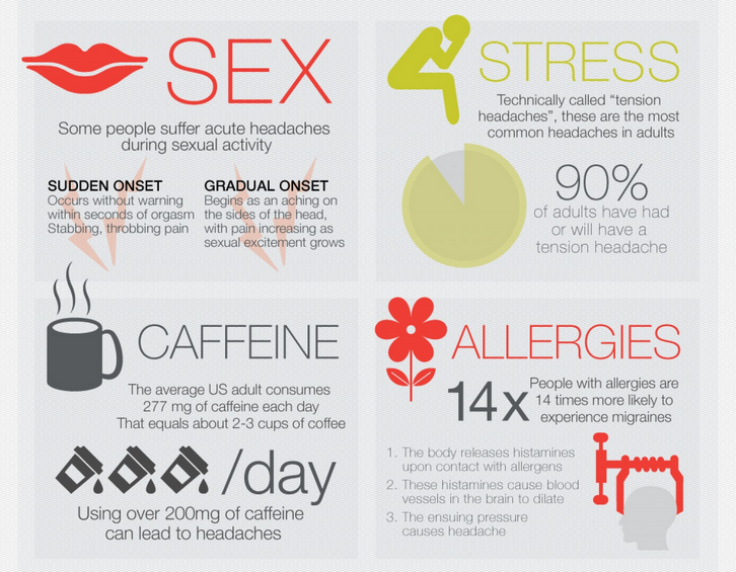8 Types Of Headaches To Watch Out For; Triggered By Sex, Stress, Coffee, Allergies, And More

Most of us recognize that unrelenting pain that jolts the inside our skull like lightning, pounds behind the eyes, and reverberates along our temples. Ninety percent of people report experiencing the occasional headache, whether it comes in the form of a sharp pain or dull pulsing sensation. However they come, there are 200 different varieties of headaches.
Headaches hurt, but they don’t cause pain to the brain itself. When looking closer at the anatomy of a headache, pain is felt through the nerves, blood vessels, and muscles that cover the head, neck, and other body parts. The nerves tell the brain it’s experiencing swelling, tightening, and other agitating pressure, and the brain communicates these through pain.
There are certain kinds of triggers that could cause an onslaught of pain. Some people suffer acute headaches during sexual activity, usually within seconds of orgasm, while others experience a gradual ache as sexual excitement builds within the body. Stress is another trigger than causes tension headaches — the most common type adults suffer. Caffeine and alcohol are both associated with different types of headaches, too. While alcohol expands the blood vessels and increases pressure around the skull, caffeine, or lack of it rather, causes headaches characteristic of withdrawal symptoms.
Bad news for people with allergies: they’re 14 times more likely to experience migraines — a more chronic and painful type of headache. The histamines that buildup in the body as a reaction to the allergen causes blood vessels to shrink and create pressure. Weather changes affecting temperature, odor, light, and elevation also cause headaches. Certain foods have the same effect, such as chocolate, potato chips, dairy products, and the artificial sweetener aspartame. Lastly, don’t slouch, sit too long, or clench your jaw. Not only is it bad for your muscles, bones, and circulatory system, but it can also lead to long-term headache pain.




























